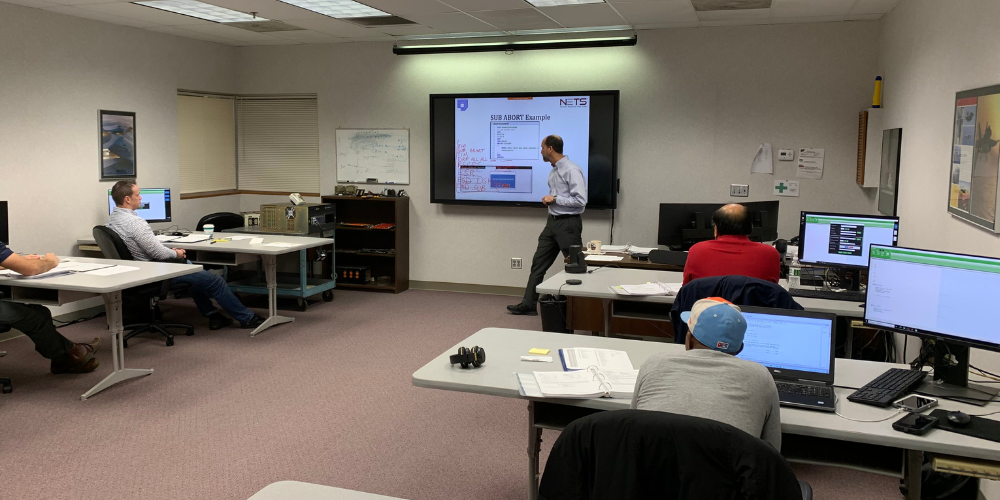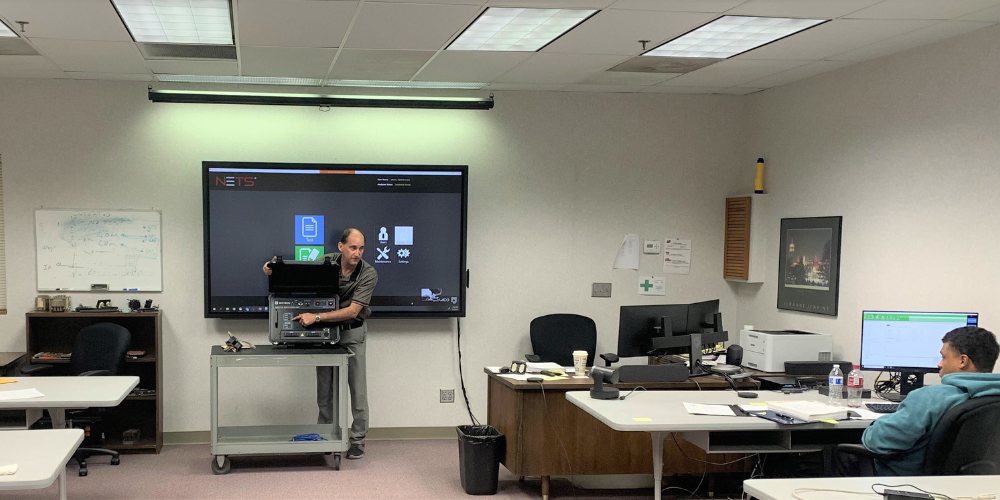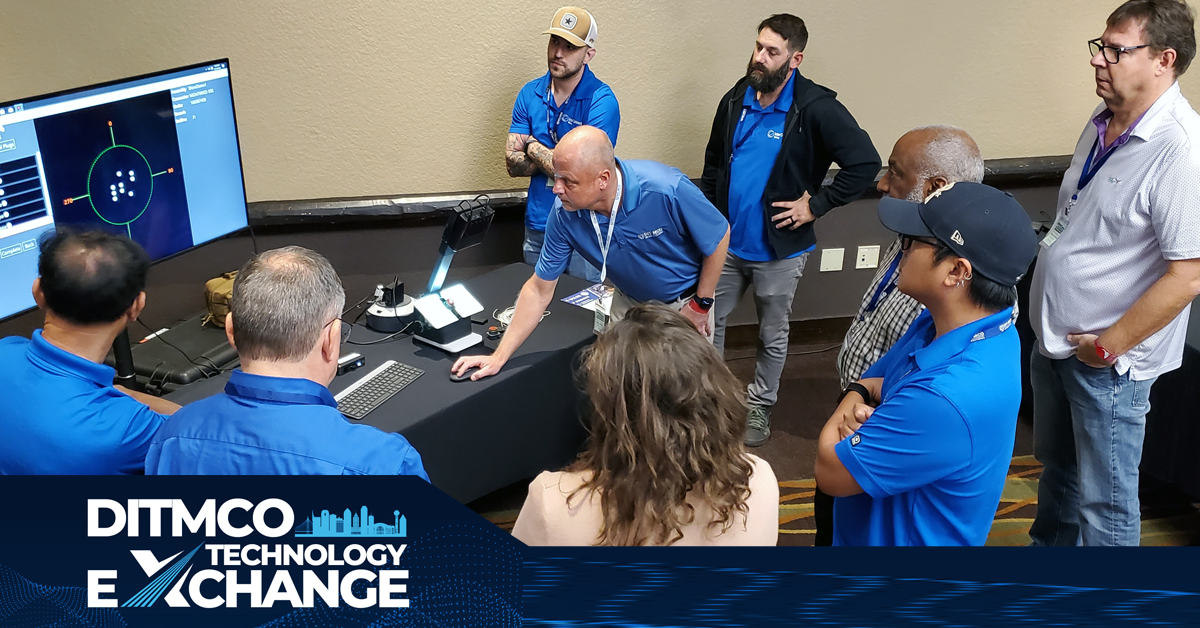Multiple obstacles had to be overcome, but after successfully navigating the training needs of our customers during the pandemic, our DIT-MCO trainer, Danny Roth, sat down to tell us about it. Read this Q&A to learn how we handled training in the virtual world.
What logistical challenges did you encounter converting to and teaching NETS Virtual Instructor-Led Training (VILT)?
“The biggest challenge with hosting a four-day VILT course is time zones. The first VILT class we held had students from four different time zones. Students on the East Coast started their day a little later than usual, while those on the West Coast began a bit earlier. To go along with this, we had to schedule lunch at a time that would accommodate everyone.
Another challenge is dispersing training material. When students are in our classroom at our facility, they receive a hard copy of the Training Manual and sit at workstations with our installed NETS software. Our students download our current software release and all the training material for VILT classes electronically. The student has to coordinate with their IT department to install NETS software on the computer they will use for the training class. This must be done a week before the start date of the class to ensure time to resolve any potential issues.”
What adjustments must you make when teaching a combined in-person and virtual training class?
“When teaching a combined class, it can be easy to forget there are virtual students. This is especially true if a student at our facility asks a question that needs to be covered in-depth; it can take some time to get back to the training material. When we go on breaks, I mute the classroom microphone, so it helps to unmute it when we return!”
When implementing VILT, were there any cost impacts?
“We had to purchase new AV equipment for our classroom because the room was not previously equipped for video conferencing. Before COVID-19, we upgraded our Smart Board to an interactive touch monitor. The interactive touch monitor allows me to share the display with students over the conferencing software and still be able to use a digital pen to write on presentation slides and explain diagrams.”
What are the positive and negative impacts of having a NETS VILT class for you as the trainer?
Positive:
“Our VILT course allows us to offer the courses to more people than ever. It allows us to teach a live class to people who cannot travel for safety reasons or across international borders.”
Negative:
“I can’t look over a student’s shoulder while working on a programming assignment to see how they are progressing. When a student is virtual, you don’t see the quizzical look on someone’s face when they don’t quite understand something. Conversely, you don’t see that aha moment when the concept you’re teaching clicks.”
How did offering VILT make your job easier? How did it make your job harder?
Easier:
“I don’t have to spend any time preparing our classroom, printing student documentation and training manuals, or ensuring visitor access requirements are completed before the course starts.”
Harder:
“There was an adjustment period when I had my first class with only virtual students. Initially, using our classroom to teach was awkward, with the room being empty and no one looking at me. It became easier a couple of days into that first VILT course, and I was more comfortable teaching a virtual audience, acting as if they were in the room with me.”
What are the advantages and disadvantages of teaching VILT?

Advantages:
“VILT training can be a cost-effective solution for DIT-MCO and our customers. We provide digital copies of our training manuals and documentation for the course instead of the hard copies provided for our in-house and customer site students. For our customers, they save the cost incurred for their employees traveling to Kansas City, including airfare, hotel stay, car rental, and per diem.”
Disadvantages:
“We have several hands-on practical assignments in our 460 Programming Course. Those assignments are emailed back and forth with VILT students for instructor review. When the student has a question during an assignment, the questions are answered via private chat messages. Sometimes, answering a question can be difficult to explain effectively, and the question is addressed verbally. It could potentially be distracting to other students to hear a conversation between one student and the instructor.”
Do you feel VILT is more or less effective than in-person training? Why?
“It can be just as effective as physically being here. I’ve found it often depends on the environment of the students. Are there distractions from their surroundings? Are they being interrupted by co-workers or, if working from home, small children? If the students can limit these distractions and remain engaged, VILT is an excellent alternative to attending a physical class. If there’s a high likelihood of external distractions and interruptions, then the cost and time spent attending physically is well worth it.”
What steps do you take to ensure student engagement in VILT or mixed in-person VILT classes?
“The best advice I would give to anyone transitioning to VILT is always to remember your virtual students are there with you. Learn their names and ask direct questions, not just “Are there any questions?” Give time to formulate an answer. Take 10 to 15-minute breaks after every hour or so of instruction. Remember, the students are likely sitting at a desk in front of a computer or laptop, watching your presentations and listening to you. Give everyone time to stretch, move around, grab a drink or snack, etc. An essential aspect of class engagement is answering and asking questions. This lets the trainer know that the student is paying attention and is involved in learning the material.
Start the virtual meeting a few minutes early and stay online after the scheduled end of the day for any student that may have questions they don’t feel comfortable asking with everyone else listening.”
How did VILT impact class size limits? How has this affected the number and frequency of training?
“Initially, we thought we’d be able to handle a few more students in a virtual environment, but we quickly realized that we needed to maintain our total class size limit of 12 students. The amount of work for the instructor is the same. There are just as many wire integrity test programs to review, and we run every student’s test program on a known product using a DIT-MCO analyzer connected to the instructor’s computer for everyone to see and learn from. Every company tests wiring slightly differently, and this is an excellent way for our students to learn from one another and share new ideas and test methods.”

With the addition of VILT, have you noticed companies sending more employees to be trained in NETS at a particular time?
“Companies may not be sending more employees at a time for training to minimize impact to their operations. The manufacturers are spreading the training and sending their employees more frequently.
“With the popularity of VILT, we had to add a NETS Programming Course to our schedule in 2021. Now that we know the demand, we’re preparing for the additional training requests and are planning accordingly for 2022’s schedule.”




